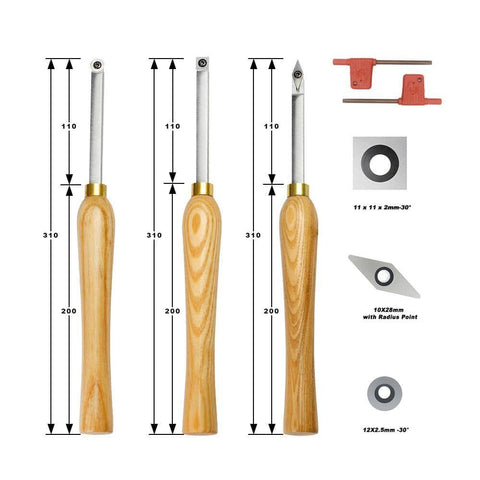 Mastering Woodturning: Essential Tools for Every Beginner and Beyond
Mastering Woodturning: Essential Tools for Every Beginner and Beyond
Woodturning is a rewarding and creative art that transforms raw wood into beautiful, functional objects. However, achieving precision and artistry requires more than just skill; it demands the right tools. For those stepping into woodturning, the process may seem overwhelming due to the variety of tools available. Here's a guide to help you understand the must-have tools for woodturning and how they play a part in crafting your pieces.
The foundational piece of equipment in any woodturner's toolkit is the lathe. Lathes come in various sizes and complexities, from mini-lathes for smaller projects to full-sized versions that can handle larger wood blanks. The primary function of a lathe is to rotate the wood at varying speeds, allowing the turner to shape it with handheld tools. When choosing a lathe, consider factors like power, swing capacity (the maximum diameter of work it can handle), and bed length. Some starter lathes may offer limited capabilities, but they are excellent for learning techniques before moving on to more advanced machines.
Chisels are the sculptor's brushes in woodturing. While it may be tempting to start with a complete set, it's best to start with a few versatile chisels and expand as you gain experience. The spindle roughing gouge, spindle gouge, bowl gouge, parting tool, and skew chisel are often cited as the essentials. Each serves a unique purpose: roughing gouges are excellent for shaping raw wood into a general form, bowl gouges handle the heavy cuts required to turn bowls and larger pieces, and the skew chisel helps in smoothing and detailing. Mastering each chisel takes time, but with practice, you'll be able to create intricate designs and achieve a smooth finish on your pieces.
Another important consideration is maintaining sharp tools, as dull chisels can make turning dangerous and result in less precise cuts. A sharpening system is, therefore, an essential companion for your chisels. Options include bench grinders and sharpening jigs, each designed to restore the razor-sharp edges of your tools. A bench grinder with a fine grinding wheel helps shape the bevels of your tools, while a sharpening jig can assist in maintaining a consistent angle. Learning to sharpen properly can significantly improve the quality of your cuts and enhance the lifespan of your tools.
Safety is paramount in woodturning. The fast-spinning lathe and sharp tools create a hazardous environment if not respected. A full-face shield protects against wood chips and debris that fly off as you turn, while dust masks or respirators are essential to avoid inhaling fine wood dust, which can be harmful over time. Wearing gloves may seem beneficial, but they can be dangerous around rotating machinery, so it's best to use proper hand positioning and avoid loose clothing. Ear protection is also advisable if your workspace includes power tools with high noise levels, as sustained exposure to loud sounds can damage hearing.
A solid workbench is an often-overlooked part of woodturning. It provides a stable base for your lathe and keeps your workspace organized. Many turners add drawers or shelves to store chisels, measuring tools, sandpaper, and finishes within easy reach. Ensuring that the lathe is securely mounted on a stable bench can also reduce vibrations, leading to more precise work and a safer environment.
Finishing products bring a project to life, adding depth and protection to the turned wood. After shaping and sanding, apply finishes like oil, wax, or lacquer to enhance the wood's grain and protect it from moisture. Sandpaper and sanding pads are necessary to achieve a smooth surface before applying finishes, and it's essential to work through different grit levels to ensure an even, polished appearance.
Measuring tools like calipers, rulers, and templates help maintain precision in your work, especially when consistency is essential, such as when creating matching parts. Digital calipers are particularly useful for measuring thickness and diameter, ensuring your work meets specific dimensions.
With these tools in hand, you'll be well-equipped to start your woodturning journey, transforming simple wooden blanks into objects of artistry and functionality. As you grow in skill and confidence, you'll discover other tools to refine your craft, from texturing tools for detailed designs to specialized chisels for unique projects. Woodturning is both an art and a craft, one that grows as you do, yielding unique, handmade pieces and a deeper appreciation for the beauty of wood.
